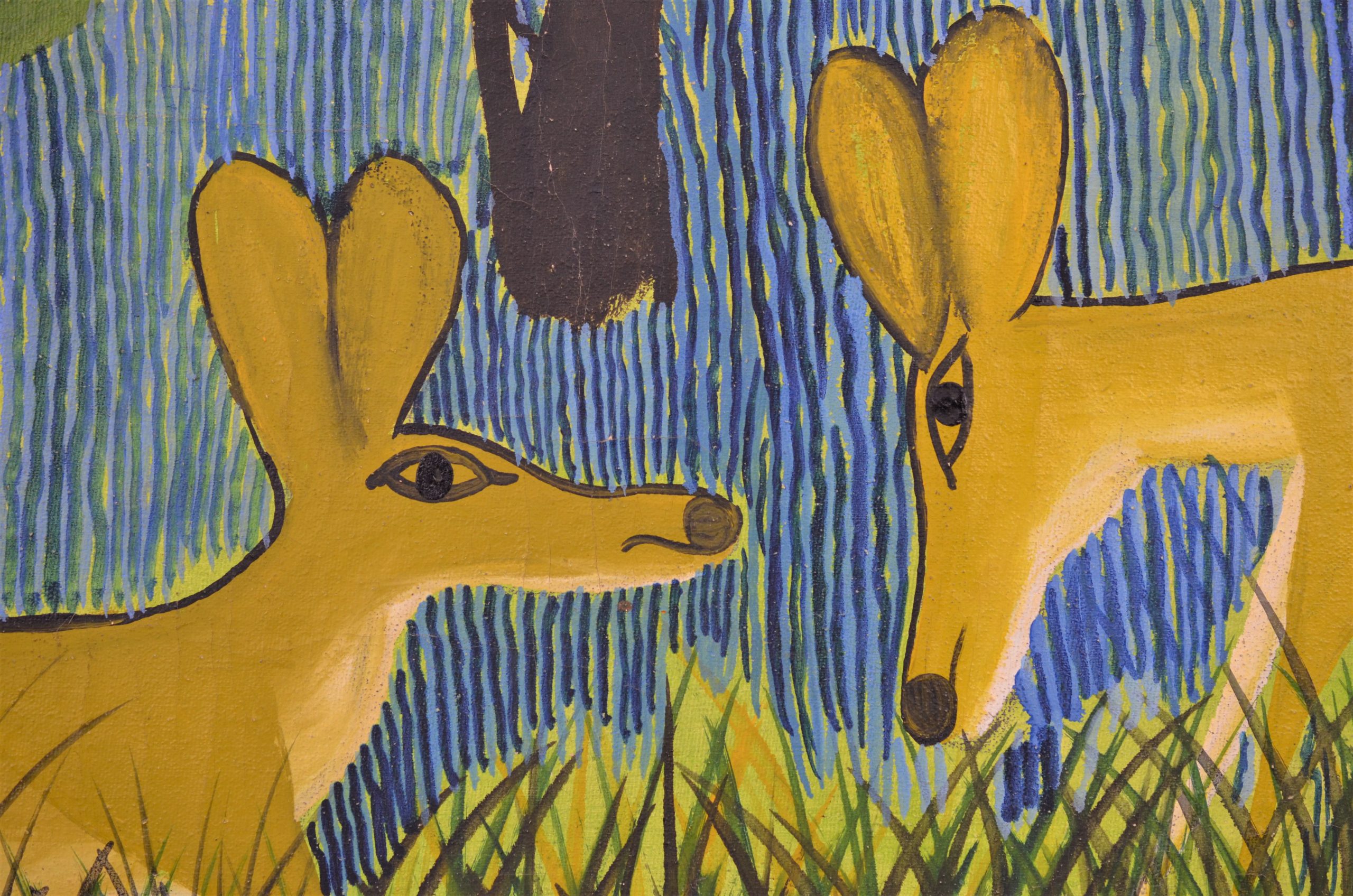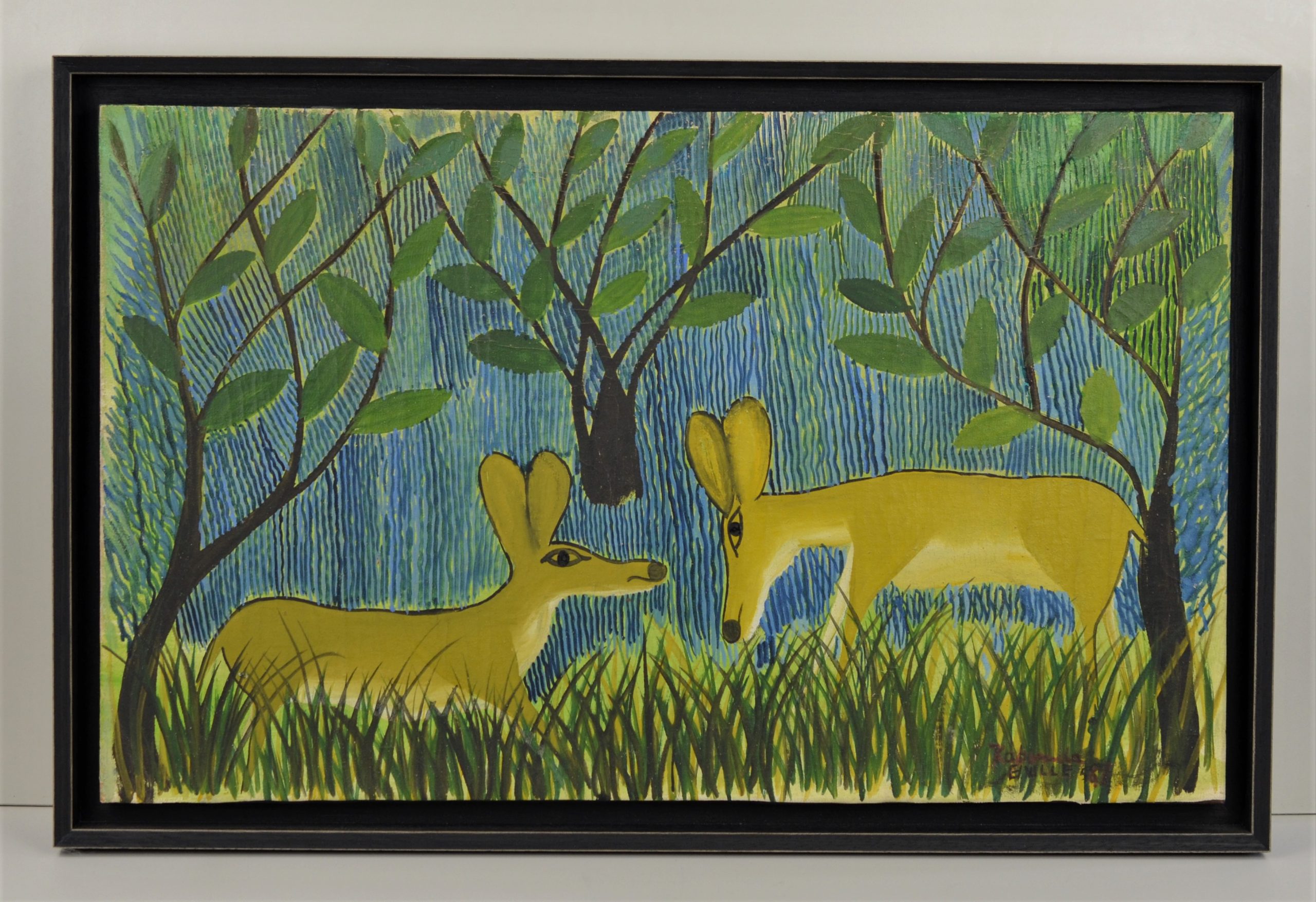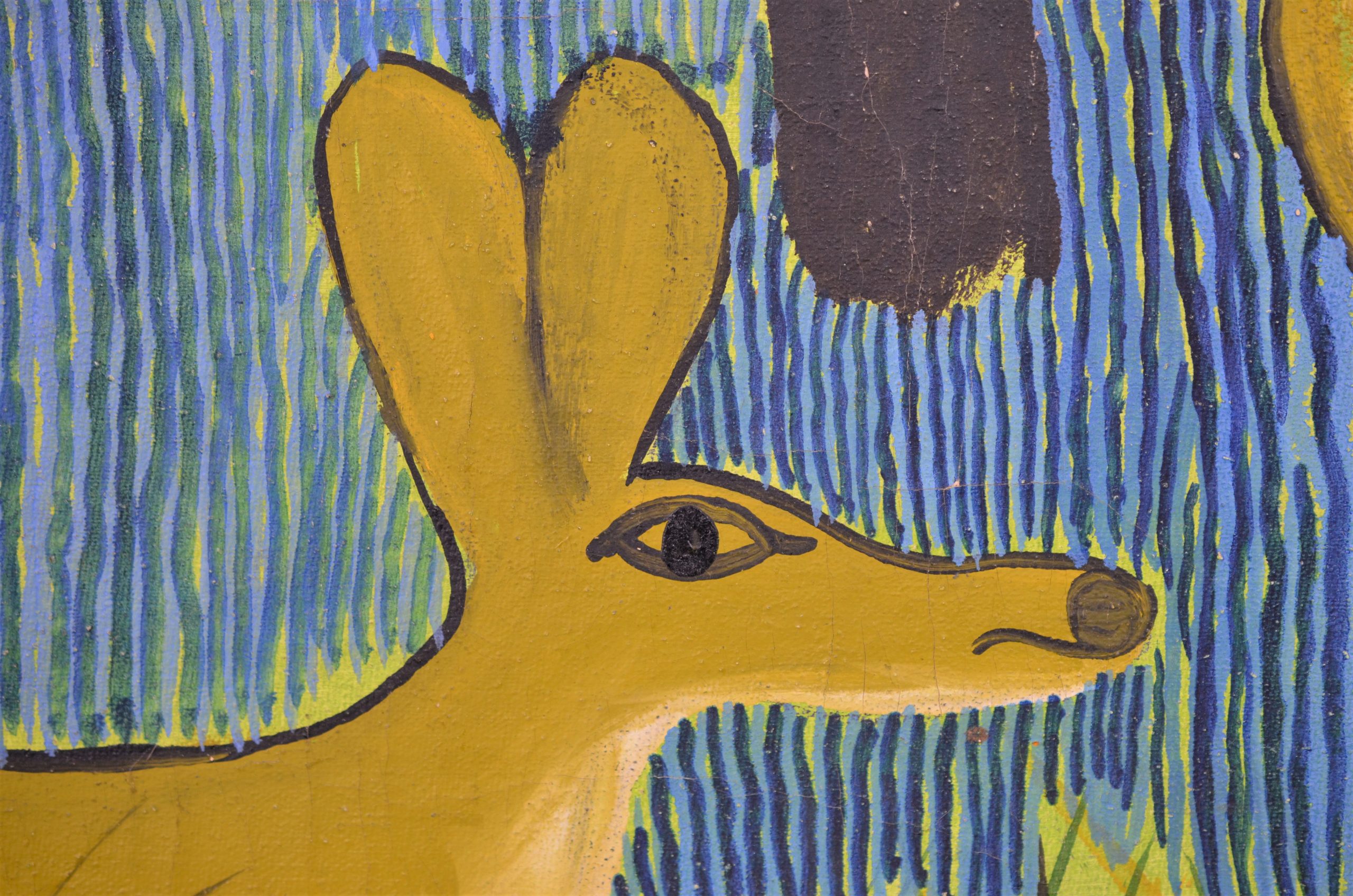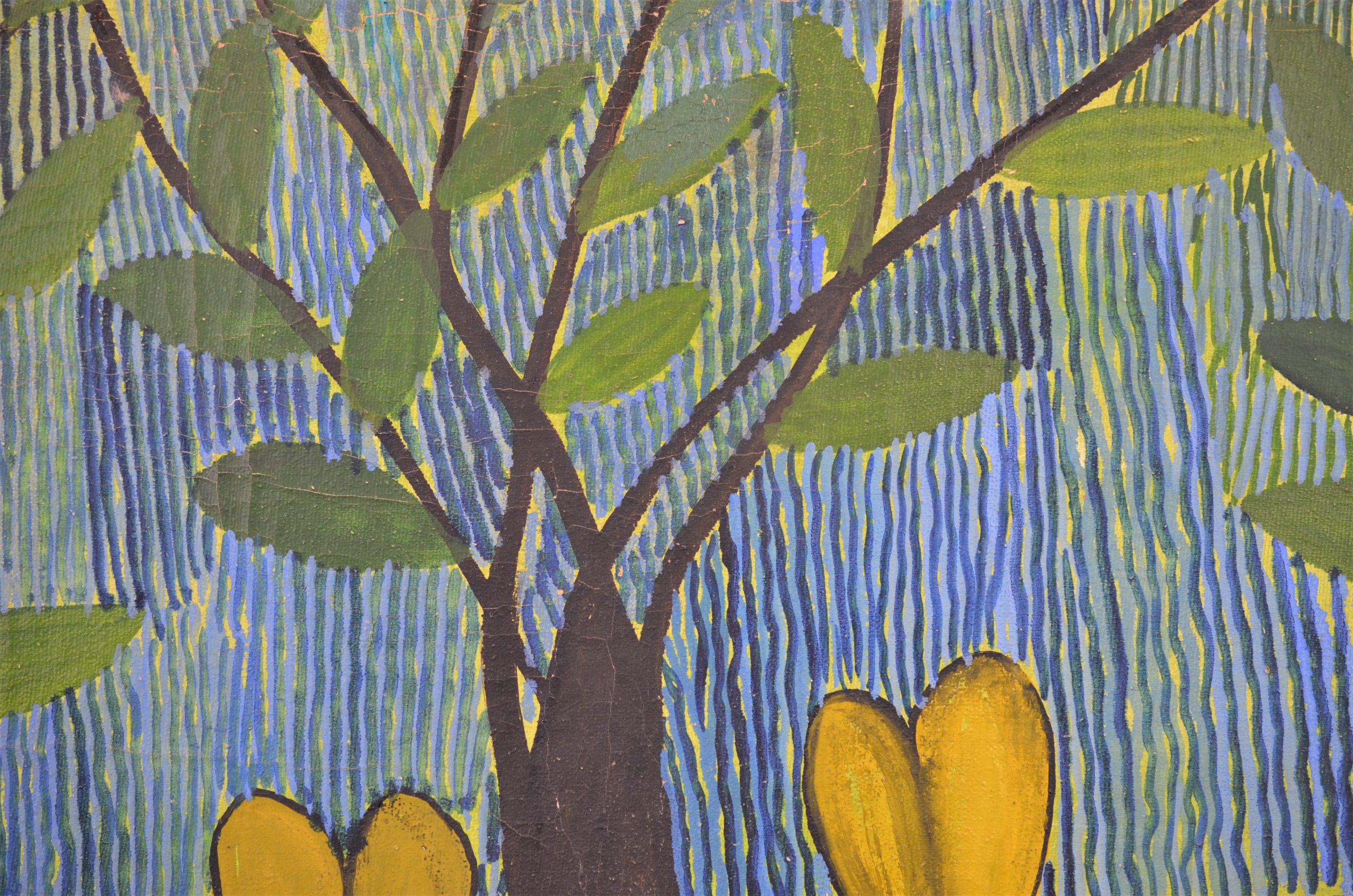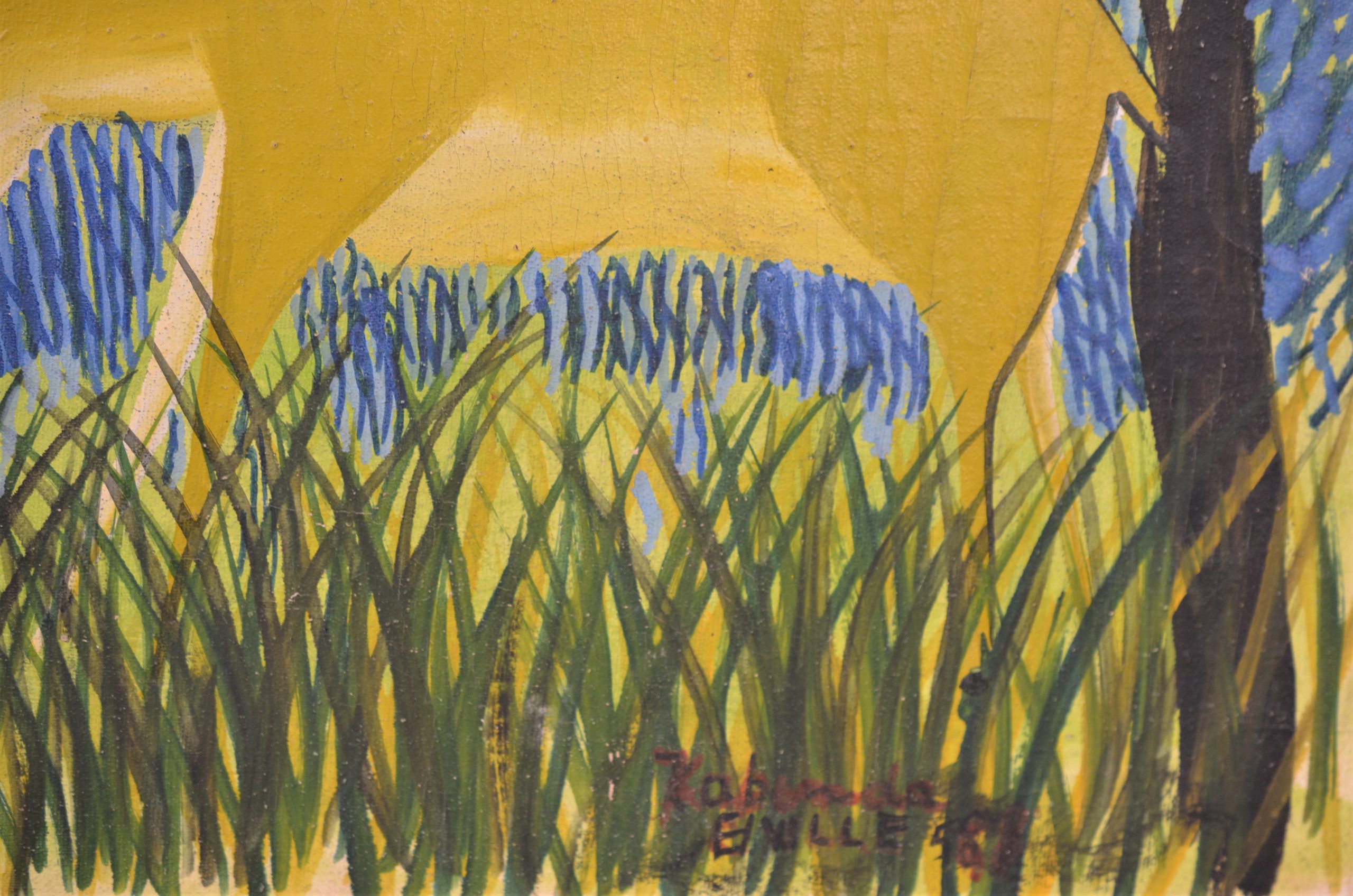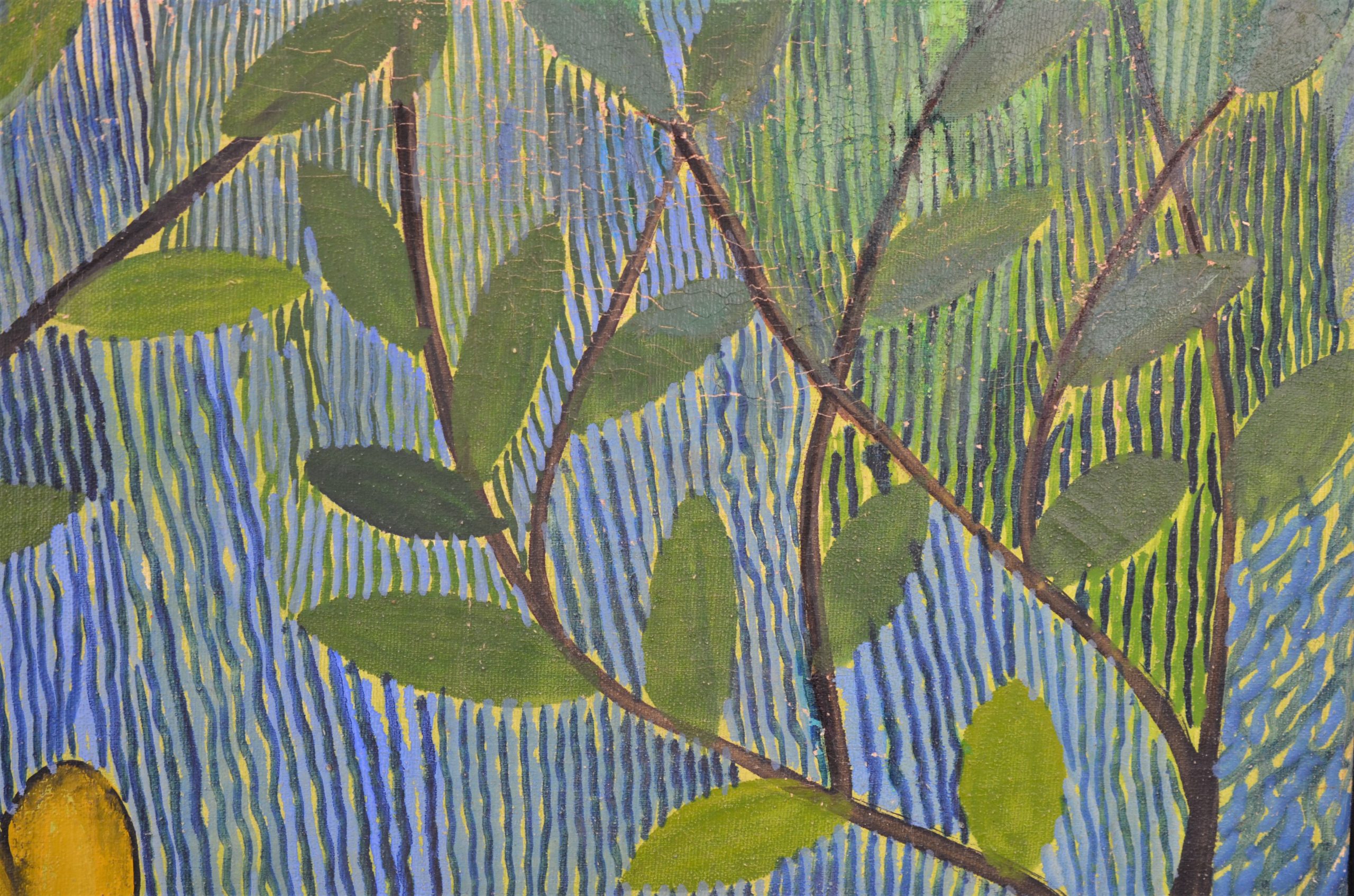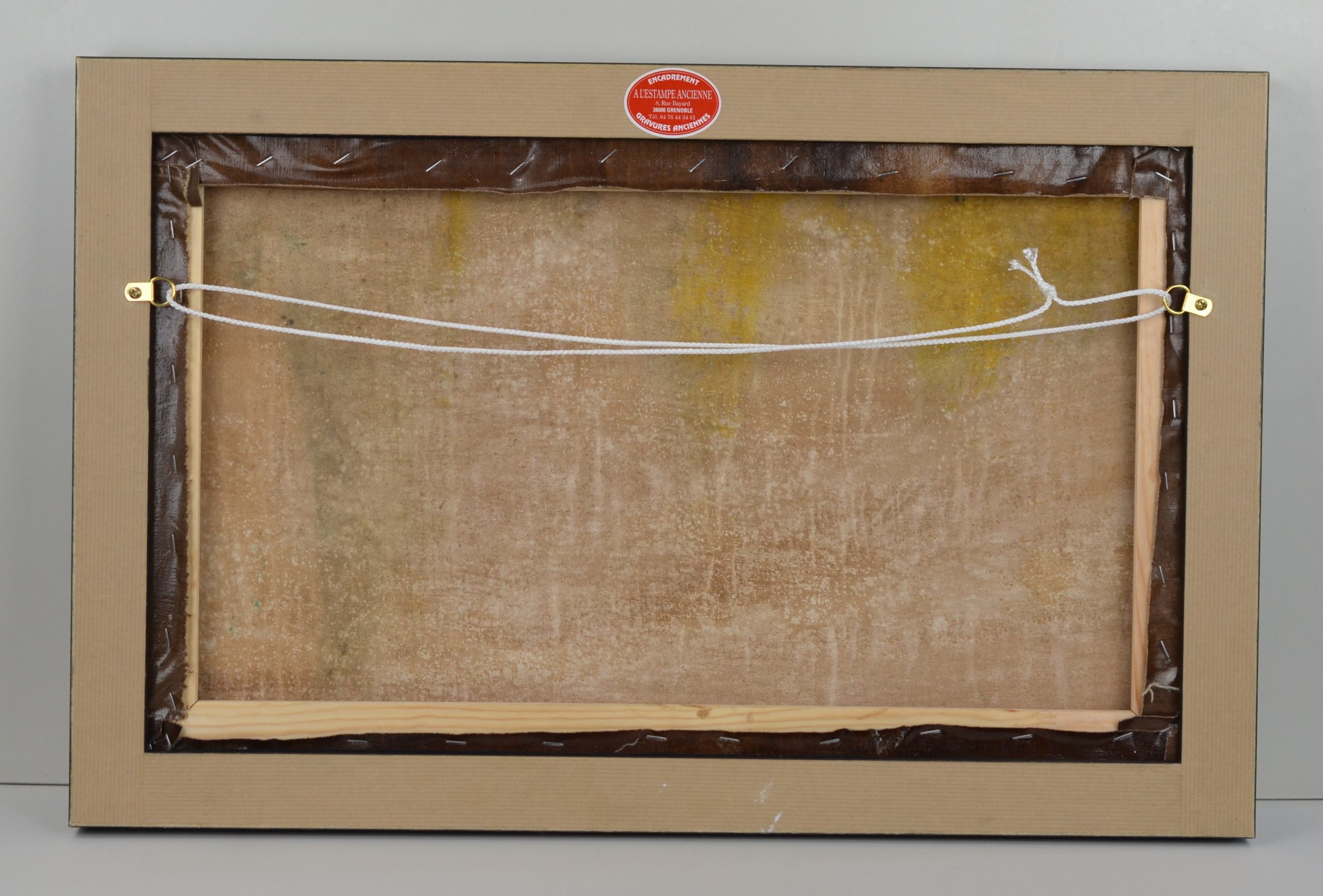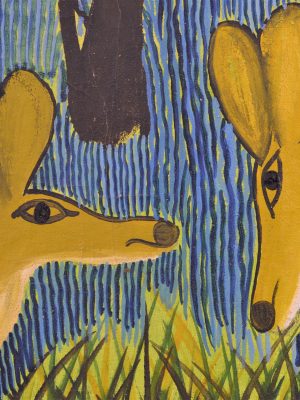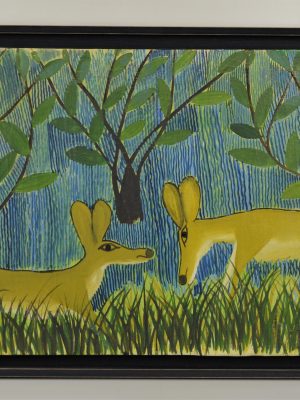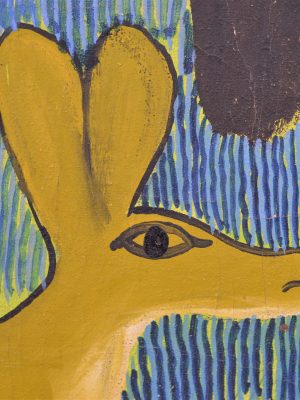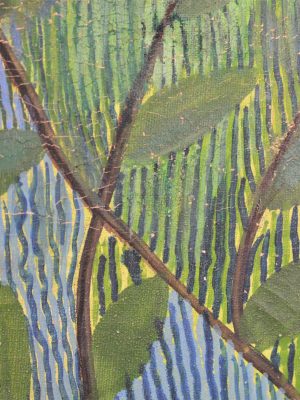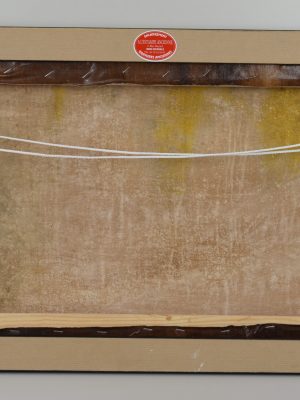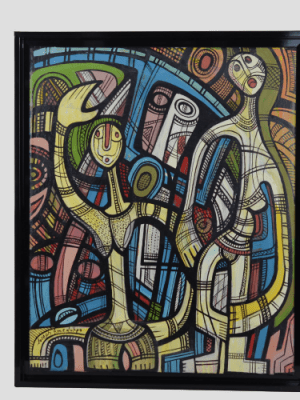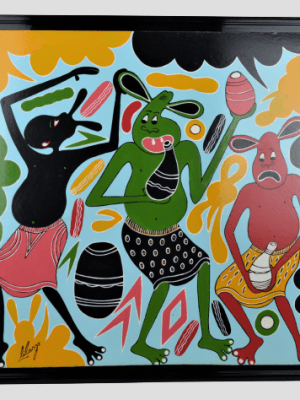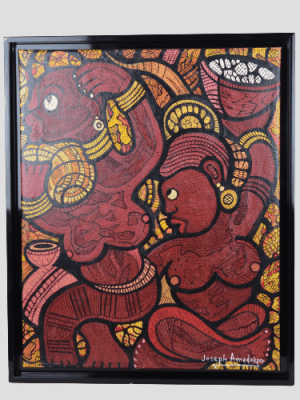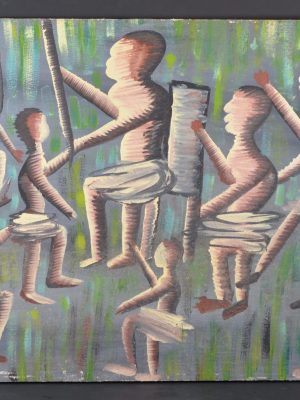Oil On Canvas Antelopes, Kabinda - Ecole D’Elisabethville
1 600€
Paint sized 62 x 38 cm. Perfect condition and framed in a black lacquered American box by a professional.
Signature lower right and dated 1958.
GO TO THE VIDEO GO TO THE CATALOG
Kabinda Kunkulu Victor was one of the painters from the “Le Hangar” art workshop founded by Pierre Romain-Desfossés in 1946 in Elisabethville, (now Lubumbashi, DRC), with Pilipili Mulangoy, Kayembe, Norbert Ilunga, Bela Sara, Mwenze Kibwanga, Raphaël Kalela and Sylvestre Kaballa. According to an interview with him in 1973 by Johannes Fabian of the University of Amsterdam, Kabinda was born in 1927 in the village of Kinda, in the Luba region of the Congo. Kabinda moved to Elisabethville to attend school in 1942, a few years before Desfossés founded L’Academie Congolaise d'Art Populaire, popularly known as the Hangar. He joined the Hangar to learn painting in 1948. Some of his best-known artists, such as Bela Sara, Pilipili Mulungoy and Mwenze Kibwanga, were already working there. Kabinda's work was clearly influenced by them, in particular by Pilipili Mulungoy. His work was largely natural landscape, and he became known for his paintings of birds and fish. In his 1973 interview, Kabinda recalls that he in turn educated a carpenter named Mwila, and Mwila taught his fellow artist named Kanyemba.
Painter and man of culture, Pierre Romain-Desfossés refuses to teach his students aesthetic rules. Rather, he encourages them in the sense of great freedom of expression beyond any submission to the canons of Western art. The unique experience of the Atelier du Hangar liberated African painting. The artists develop their own style, by painting their environment, scenes of villages, hunting and fishing, their painting becomes a poetic space, the symbiosis between man and nature, more than the representation of nature itself. What gives an incredible force to these tables. This modern Congolese painting is striking with its singularity and modernity.
The Hangar will not survive the death in 1954 of its founder Pierre Romain-Desfossés. Some artists like Mwenze and PiliPili will join the Elisabethville Academy of Fine Arts founded by Laurent Moonens three years earlier. Two artists will be leaving the Academy: Mode Muntu and Jean-Bosco Kamba.
The work of several artists from the Hangar was presented in the revolutionary exhibition Congo Beauté 1926 - 2015 Congo Kitoko, at the Fondation Cartier in Paris.
- Dimensions: 62 cm x 38 cm (sans cadre)
- Epoque: 1958
- Matériaux: Huile sur toile
- Pays: R. D. du Congo
